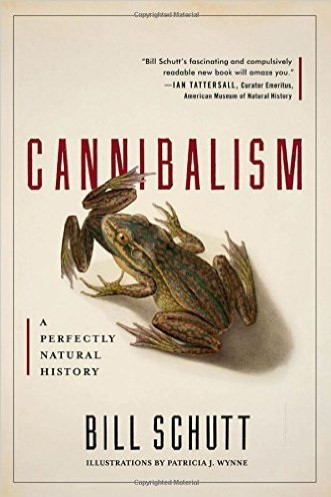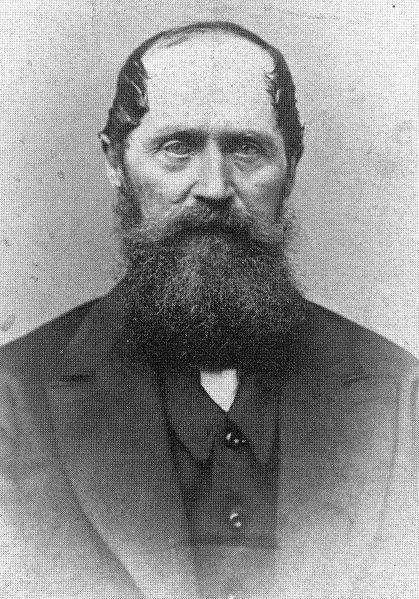Donner Party cannibalism wasn't a myth – it's evidence that starving humans will eat each other
There is a huge amount of taboo regarding cannibalism among humans, but it is found throughout nature – is it really that strange?
The Donner Party is one of America's best known stories of cannibalism. It began in 1846, when a group of 87 people set off from Missouri to make their way to California in search of a better life. However, instead of taking the normal route across the US, they took "the most ill-advised shortcut in the history of human travel". After four months stranded, almost half of the party had died. To survive, the rest resorted to eating the dead.
Western society views cannibalism as a major taboo. When the survivors of the Donner Party reached safety, they were largely looked upon badly by the press, said Bill Schutt, author of Cannibalism: A Perfectly Natural History. In the book, Schutt, a professor of biology at LIU Post and a research associate at the American Museum of Natural History, examines the true nature of cannibalism. He examines its prevalence in nature, its role in evolution and its presence in human culture.
He told IBTimes UK that while writing, he was surprised at just how widespread cannibalism is in the animal kingdom: "I really had no clue. Like a lot of people, I thought I would find it in praying mantis and black widow spiders, but the scope of this behaviour was a real surprise. And among humans, the fact medicinal cannibalism was so prevalent throughout Europe for hundreds of years - right up until the beginning of the 20<sup>th century.
"Cannibalism is a very natural behaviour in the animal kingdom. When it does occur in humans, it occurs for reasons other than starvation or overcrowding – there's ritual cannibalism, culinary cannibalism. It's a lot more than just Jeffrey Dahmer and his ilk."

Examining the case of the Donner Party – in a chapter titled The Worst Party Ever – Schutt looks at the background to the event, the impact of starvation on the human body, the way in which accounts were presented and how a major misinterpretation led people to believe cannibalism had never taken place.
"It's probably the best known story of cannibalism in the US," Schutt said. "There's always a bit of controversy about anything historical, but a massive amount of evidence indicates that there was cannibalism at four different sites, so there's really no argument from the perspective of researchers and experts. It occurred late, it occurred predictably. Now we're getting more specific about where it took place and behavioural scientists are understanding now why it took place."
The pioneers, many of them children, followed a route invented by a promoter who had never taken it himself. Not only was it 125 miles longer than the normal route, it was also far more difficult – taking them through the Wasatch Range, across the Great Salt Desert and over the Sierra Nevada mountains. Along the way, 60-year-old George Donner was elected leader, despite having no experience.
Because of the delayed route, they ended up entering the last leg as winter was setting in. The group split in two, with one eventually reaching a mountain pass just 50 miles from their destination. But overnight, it began to snow and the group found themselves stuck.
They turned back and stopped at an abandoned cabin where they decided to spend the winter – "perhaps their greatest mistake," Schutt writes. The other group that had fallen behind faced a similar situation, getting stranded in Alder Creek Valley where they constructed a few sheds to spend the winter in. Another splinter group attempted to leave, with seven surviving and eight more dying. Seven of the eight dead were cannibalised.
But back to the camps. They consumed everything they could possibly eat – their cattle and dogs, followed by rodents, leather belts, tree bark and boiled animal hides. Eventually – and as a last resort – they turned to cannibalism. Survivors "were forced to eat their own dead relatives, including children", Schutt said.


Rescue parties eventually arrived, but many of the surviving pioneers were too weak to leave, resulting in multiple efforts over the course of months, the last taking place in April 1847. In between the third and fourth relief efforts, lone pioneer Louis Keseberg ended up eating the wife of George Donner, Tamzene. Rescuer William Fallon said there was no trace of her body left.
"There was no real mystery though," Schutt wrote, "since by his own admission, Keseberg, whom they had found alive, had eaten Mrs Donner as well as many of those who had died in the mountain camps. In fact he had been eating nothing but human bodies for two months."
After all survivors had been rescued, many gave accounts of cannibalism. Yet that it ever took place was thrown into question in 2010, when a university press department put out a release about the bones recovered from the Donner Party sites. Findings supposedly showed no evidence of cannibalism, leading to media reports saying it never took place.
"They came out with the results before the study had been published," Schutt said. "They misinterpreted what they read. They were looking at a specific instance where this one pile of bones – the remnants of a cook fire, that they didn't find human bones. They took that to the next step to say cannibalism didn't take place.
"In reality, that was not what the researchers were saying. They ate their dogs, cattle, animals and everything else they had that was edible long before humans were eaten and by the time cannibalism took place – very late in the game for the Donner Party – there was no need to process those bones the way they had been processing the animal bones. With the latter, they cooked them then cooked them again to get every bit of nutrition out of them. When cannibalism began, there was no need to process the bodies over and over again as there was plenty of meat around."
The Donner Party is an instance where humans turn to cannibalism because of starvation. There are plenty of these cases found in fairly recent history. These include the Andes flight disaster in 1972 and the besieged city of Stalingrad during WWII. Cannibalism, Schutt says, is a predictable response extreme stress.

But there is a wider story of cannibalism in human populations – one that does not involve starvation. And while the western taboo has permeated society for centuries, the same is not necessarily true of other cultures: "It just snowballed into this taboo into what Westerns have now. The cannibalism taboo goes far back and groups that did not get that exposure. Like the Chinese and indigenous groups - cannibalism was not the big taboo we have turned it into.
"It's engrained. One of the reasons I wrote this book is to show it is natural behaviour throughout the animal kingdom - it takes place for reasons that have nothing to do with stress, whether it's parental care, a lifeboat strategy or changing environmental conditions. There are many reasons that don't have to do with a starving group like the Donner Party or thousands trapped in Stalingrad."
But will this taboo need to be addressed in a changing world? As Schutt explains, cannibalism is a normal aspect of nature – and in humans is a "normal response to severe stress, especially during times of famine and warfare".
He continues: "How much of a surprise would it be if the butchery of humans for food becomes commonplace in drought-ridden and overpopulated regions of the near-future Earth? ... In a world where global climate change is taking place before our very eyes, there may be little to prevent famine-related cannibalism from happening again, especially in the poorest and most unstable countries in the world."
© Copyright IBTimes 2025. All rights reserved.






















